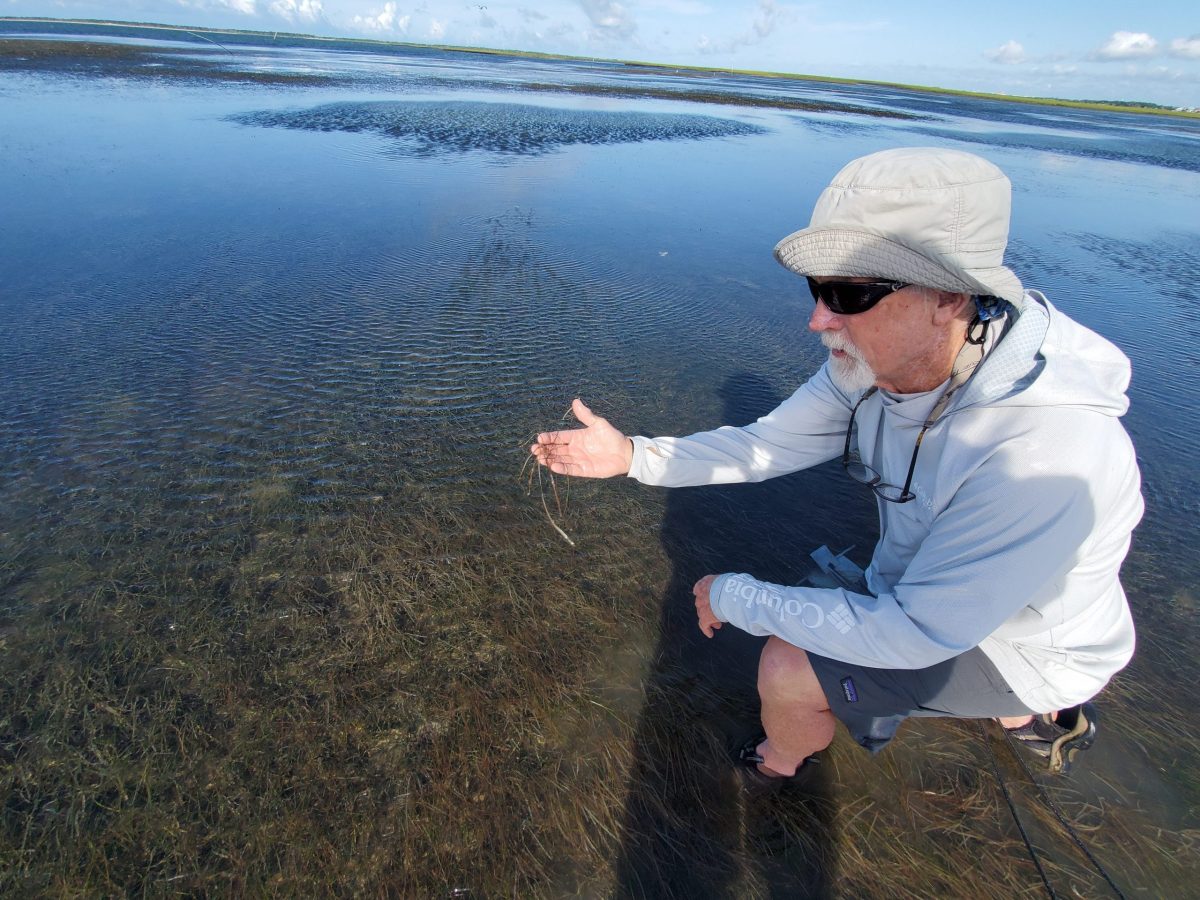
This is the first of a five-part series Changing Tides originally published by Carolina Public Press with support from the Pulitzer Center.
A small net dipped into a patch of grass submerged in shin-deep water near the edge of a salt marsh on the central North Carolina coast.
Supporter Spotlight
Retired National Oceanic and Atmospheric Administration scientist Jud Kenworthy of Beaufort lifted the net to reveal a colorfully striped juvenile pinfish, no bigger than a pinkie, among the strands of green and brown vegetation.
Pinfish are among dozens of fish species residing in estuaries for part of their lives, grazing on underwater grasses. Eventually, schools of the small fish, distinguished by a sharp dorsal fin, will spawn offshore in large groups and be hunted by predators: groupers, snappers and dolphins.
Their journey ends when hooked by a recreational angler from a pier or captured by a commercial fishing vessel to be used as bait for a bigger catch.
But the pinfish depends on the rich estuarine habitat that flourishes along the North Carolina coast — an ecosystem that relies heavily on a meadow of grass covered by 12 inches of salt water where land and sea merge. The threat of climate change to those seemingly mundane patches — which are seldom above water — is a threat to the entire oceanic ecosystem.
Indeed, the insidious impact of climate change on North Carolina’s coastal fisheries — the species in the water and the people who catch them, study them, sell them and eat them for dinner — may lie in murky meadows of submerged aquatic vegetation, or SAV.
Supporter Spotlight
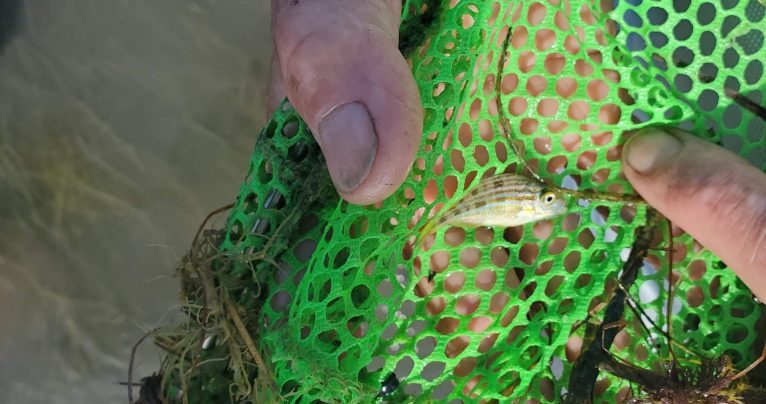
The unnoticed foundation
Kenworthy anchored his small vessel in Back Sound, between Shackleford Banks and the mainland of Carteret County. The east end of the sound is framed by two barrier islands, separated by a narrow inlet, which meet at a 90-degree angle at Cape Lookout. The junction forms what looks like the apex of a tensioned slingshot, ready to blast its ammunition inland.
“North Carolina is at this unique biogeographic boundary,” said Kenworthy, a thunderhead bulging over the Atlantic Ocean behind him. “There are probably only two or three places in the world like this, where major ocean current systems overlap and collide.”
From Corolla to Calabash, a confluence of tropical water from the Gulf Stream blends with a countercurrent of chilly sea transported on the Labrador Current from the North Atlantic, nourishing the grasses.
The unique mingling of seawater yields expansive meadows of both tropical and cold-temperate marine grass species that permit a year-round supply of vegetation supporting one of the world’s most diverse ocean habitats.
The ecosystem is a crucial variable to untangle not just how changing temperatures and rising sea levels will impact the grasses on which the scientist is standing, but how the marine organisms that live in North Carolina’s coastal waters — everything from microscopic critters to sharks — will respond to climate change.
Once regarded as a nuisance, ecologists now deem seagrass as vital to the health of coastal waters and communities. The vegetation absorbs excess nutrients, producing oxygen and capturing carbon dioxide. The grass also blunts the wave energy that erodes shorelines, slowing the persistent creep of barrier islands toward the coast. It also serves as a nursery habitat, providing food and shelter for a range of organisms.
Kenworthy, an adjunct faculty member at UNC Wilmington and a member of the scientific and technical advisory committee of the Albemarle-Pamlico National Estuary Partnership, became fascinated with seagrass while growing up in coastal Rhode Island.
In the early 1900s, European scientists identified seagrass as an important component of coastal ecology. However, interest in its ecology languished for decades.
“There were few people who really knew enough to care about seagrass,” Kenworthy said.
That is until the 1970s, when renewed interest intersected with a surge of research funds.
Kenworthy was one of a handful of students funded by the National Science Foundation to study seagrass in the ’70s. At the time, little was known about its habitat and ecological function.
In the 1980s, as a member of a NOAA team, he helped create the first maps of seagrass habitat.
Based on those and more recent observations, North Carolina has somewhere between 100,000 and 130,000 acres of seagrass in addition to other SAV species that are equally important but harder to map, tucked behind the barrier islands and in estuaries up and down the Carolina coast.
In the ’80s and ’90s, experts began to notice that poor water quality was decimating seagrass in the Chesapeake Bay and along the Florida coast, but North Carolina was spared because of the high quality of its estuarine waters.
SAV, like an average front lawn, requires light to survive, making diminished water quality and higher sea levels its enemies.
“Think of a green, yellow, red scale bar to measure the quality of seagrass,” Kenworthy said.
“We have a lot of yellow, a healthy amount of green and a few red. With climate change coming at us, all of our yellows will be red. Greens will become yellow because of things that are stressing the system.
“Nowhere are we seeing increases in seagrasses in North Carolina. That’s unacceptable.”
And one thing is clear, Kenworthy said: “If you don’t have seagrass, you’re going to lose these fisheries.”
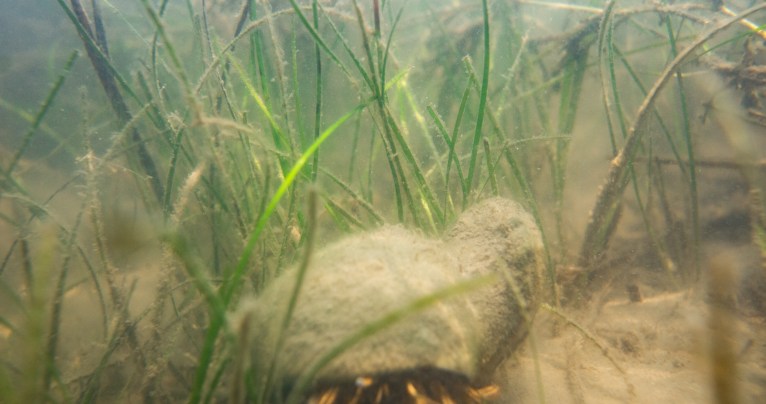
‘You can’t hide from a warming ocean’
Climate change affects creatures around the world. But land animals may have a slight advantage over marine species in running from the ill effects of global warming: the ability to escape.
While a fox can find shade in a grove or move to the north side of a ridge, a fish can’t hide from ocean warming.
As a result, said Rutgers University research ecologist Malin Pinsky, oceans and marine species are feeling the impacts of climate change because they are more sensitive to temperature change and respond faster than species on land.
“When I was starting my career, there was so much discussion about climate change impact on land, but there was very little discussion about the oceans,” he said.
“Because marine species are especially sensitive, we’re seeing responses in the ocean that are five times faster than what’s observed on land. You can’t hide from a warming ocean.”
A central question for scientists, including Pinsky, is how the transition will take place. “Climate variability and ocean warming are not abstract future problems,” Pinsky said. It’s here already, he said.
More evidence shows that ocean temperatures are increasing off the North Carolina coast, particularly in the winter, said Jim Morley, a scientist at East Carolina University’s Coastal Studies Institute.
Oceans serve as a giant heat sink for the globe. Without oceans, people on land would experience dramatically higher temperatures. The oceans absorb the majority of the excess heat. Because they distribute the heat widely, ocean temperature gains are subtle.
Nevertheless, even a small change in ocean temperature can have a profound impact on how marine species respond. For example, as an ocean warms, it loses oxygen, threatening the survival of species that require oxygen from the water.
As ocean conditions alter, the likely result will be a massive rearrangement of marine life.
Some species may move north or south as ocean temperatures and currents are altered. Other species may thrive on the change to Carolina’s coastal waters, while still others are depleted.
“With climate change, in North Carolina, there are going to be winners and losers,” Morley said.
The results are already evident. North Carolina historically is at the northernmost boundary for commercial quantities of white shrimp, which do poorly in cold water. But the shrimp, one of three marine crustacean species harvested in North Carolina waters, have multiplied at a surprising rate over the last decade in Pamlico Sound.
According to the N.C. Division of Marine Fisheries, white shrimp made up 10% to 37% of the annual total catch between 2015 and 2019, up from 0% to 8% between 1994 and 2015.

For commercial fishing enterprises, the boom is good news, bringing a longer season for the consumers who covet the shrimp for dinner.
In 2019, the Jacksonville Daily News reported that shrimp trawlers were landing enormous hauls of white shrimp, upward of 20,000 to 30,000 pounds.
Ashley O’Neal, owner of O’Neal’s Sea Harvest in Wanchese, told the Daily News that in the past, 12,000 pounds was a good catch.
“This 30,000-pound stuff is unheard of,” O’Neal told the Daily News.
Nevertheless, while white shrimp have moved in, summer flounder are leaving Carolina waters, forcing other commercial fishermen on longer voyages to capture their federally allotted quota.
Pinsky described recent research examining large trawl boats from Beaufort, whose primary catch is summer flounder. In 1996, the fleet fished mainly off the Carolina coast. Over time, however, the average catch location moved north, and it is now primarily fished off the coast of New Jersey.
As summer flounder have migrated north, fishermen must take longer, more expensive trips requiring larger boats to travel longer distances.
The puzzle for scientists, Morley said, is that climate change effects don’t happen overnight.
“To really understand potential impacts of climate change, you really need to look at a long series of data,” he said. “The focus of our work is trying to identify the species that might be subject to the greatest amount of change due to ocean warming.”
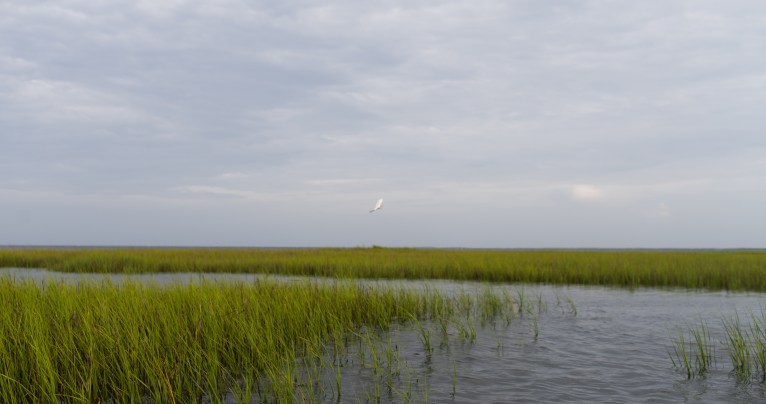
‘We are drowning marshes’
Understanding and predicting how fisheries are changing may help regulators too.
Federal authorities, primarily the NOAA Fisheries (the National Marine Fishery Service), manage marine fisheries within the U.S. exclusive economic zone extending 3-200 nautical miles off the coast. Individual states are responsible for fishery management from their coastlines out to 3 miles.
“Fishermen are at the absolute tip of the spear of climate change. We are on the front line,” said Tom Roller, a fishing guide in Beaufort who is serving his second term on the N.C. Marine Fisheries Commission. “Our role is to manage the fish that are in the water.”
Even without a warming climate, Roller told Carolina Public Press that it’s a difficult job.
“The biggest challenge is trying to maintain a viable coastal economy. It’s a balancing act. At the end of the day, our role is to manage the fish that are in the water. But at the same time trying to identify the big picture of what’s causing changes to fish stocks, such as water quality and climate change.
In North Carolina, the state Division of Marine Fisheries stewards the state’s coastal fisheries, working in conjunction with the nine-member N.C. Marine Fisheries Commission. The governor-appointed commission adopts rules and management plans within its jurisdiction.
The Marine Fisheries Division develops fishery management plans for commercially and recreationally significant species or fisheries, such as red drum, southern flounder and shrimp.
Plans are also supported by the independent research of scientists, including Pinsky and Morley, as well as the observations of commercial and recreational fishermen.
“If climate change proceeds too quickly and if we continue emitting these really high greenhouse gas emissions, there will be dramatic disruptions and unpleasant surprises,” Pinsky said.
Yet, fisheries management plans are not driven solely by science. There’s a complex calculus in managing fisheries that also considers the communities and individuals that depend on healthy fish stocks.
“I worry about the human side and how we adapt in a way that is equitable and leads to a fair distribution of resources,” he said.
“I’m worried if ocean resources change too quickly, it’ll spark conflicts, and we’ll end up just fighting among ourselves over the scraps that are left.
“I think there are worrying signs that we may head down that path if we don’t get our act together and start planning for change rather than hoping things will stay the same. The oceans are largely hidden from our daily lives, so we don’t realize this massive rearrangement of life just off our coast.”
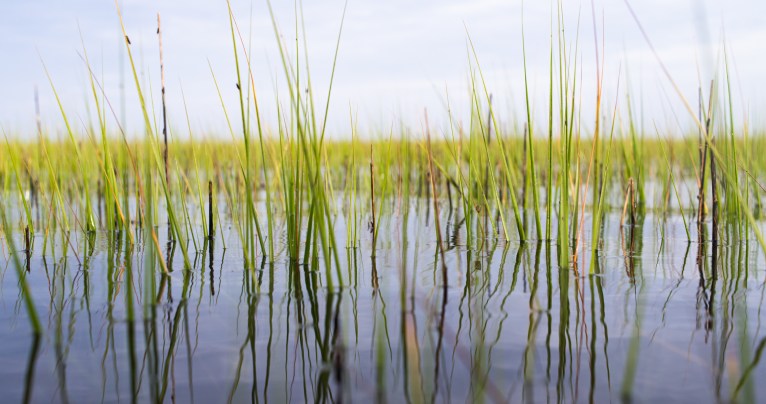
Marsh ecology
What not be may be evident to visitors and residents of the coast is that vast salt marshes protect North Carolina’s shoreline and serve as crucial habitat for fish species.
Unlike seagrasses, which are below the water’s surface, the rich green salt marshes are coastal wetlands flooded and drained by tides.
The salt water flowing in and out fosters a staggering amount of diversity, providing food, refuge or nursery habitat for more than 75% of fisheries species, including shrimp, blue crab and finfish.
“Seagrass and marshes are dynamically interacting with each other,” said Kenworthy. “Many species need both, and we are just now beginning to insert a way of thinking into this process at larger scales and time frames.”
Carolyn Currin, a research scientist at NOAA’s laboratory in Beaufort, studies their microbiology. Microscopic organisms, which flourish in marshes and seagrasses, are the basis of a vast food chain.
Salt marshes make up roughly 8,000 miles of North Carolina’s 12,000 miles of estuarine shoreline, she said.
However, rising sea levels are altering the marshes.
“Water is inundating the lower and upper elevations of the marsh for a longer period of time,” Currin said. “So, the whole community of marsh has to respond to increasing periods of flood.”
The increased flooding may have meaningful consequences for the marsh ecosystem since there is a narrow sweet spot of sea level where marshes can thrive.
As salty ocean water floods inland and into estuaries, it can mow down plant life in salt marshes due to increased salinity, lack of sunlight and diminished oxygen.
Plants at the edge of marshes are more resilient to being covered periodically in seawater. However, some marsh grasses that sit on higher land are less accustomed to seawater and less likely to adapt to higher seas and being submerged more often as sea levels rise.
For eons, marshes have responded to sea level changes and flooding by building elevation. As organisms die and add to the biomass at the base of the marsh, they also move inland to higher ground. This time, human development on land and changing topography may inhibit their migration.
“There is a limit to how fast they can keep up,” Currin said. “The problem is that we are getting to the higher end of that limit. We are drowning marshes.”
Much of Currin’s work is developing and examining the effectiveness of different shoreline stabilization efforts, an approach that emphasizes nature-based infrastructure instead of hardened materials, such as a bulkhead or a sea wall.
For example, the North Carolina Coastal Federation released and facilitated a five-year oyster restoration and protection plan in April, designed to reconstruct a living, healthy shoreline.
But Currin is skeptical about the potential to reverse the damage.
“Now we’re thinking that those low marshes won’t be around in 10-20 years,” she said.
“Those marshes will not be fish habitat if they are underwater most of the time. We really need to think about the future and come up with habitat restoration plans that will be resilient to an extra 6 inches to a foot of sea in the next 25-30 years.”
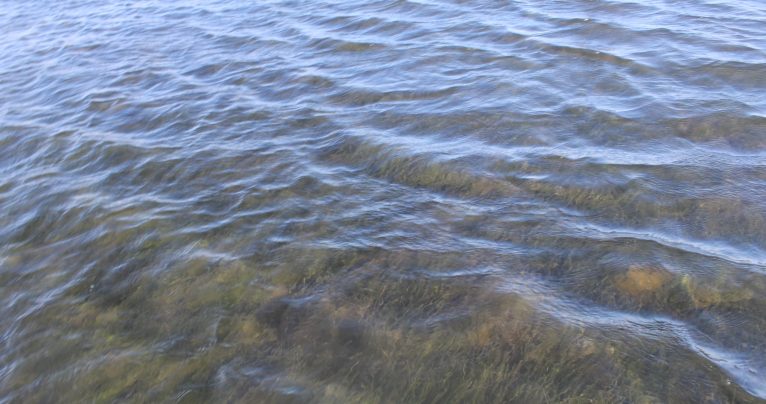
From the helm of his vessel, Kenworthy yells over the din of the wind and outboard engine about why he thinks people should care about seagrass, notwithstanding its invisibility to those passing by it, or over it, in boats at 10 knots.
The potential losses
“Seagrass doesn’t have the profile of a charismatic species like a sea turtle or a manatee,” he said. The mundane grass also lacks the culinary prestige of an oyster.
A sensible way to grab people’s attention, he thinks, is to draw a connection between a species that recreational and commercial fishermen like to catch and the health of the meadows of seagrass.
A recent study examined the value of two species prized by weekenders from Raleigh — spotted sea trout and red drum, as well as one of the most valuable North Carolina commercial products, blue crab. Each of the populations hinges on the health and existence of the marshes and seagrasses where they spawn, nourish and grow.
The report by Duke University and N.C. State University measured the economic losses of losing submerged aquatic vegetation. The report estimated that a 5% loss of SAV over a decade would cost the state $8.7 million, and a 50% loss of SAV over a decade could cost $88.8 million.
While it may be too late to counter rising seas, protecting water quality is still within our control, Kenworthy said. Clear water means more sunlight and the possibility of balancing the consequences of higher water.
That means working with public agencies, such as the N.C. Division of Water Quality to regulate and enforce nonpoint sources of pollution, such as sediment from construction or fertilizer from farmland.
Additionally, thoughtful land use policies to organize development, and manage stormwater and wastewater will help alleviate future impacts of growth.
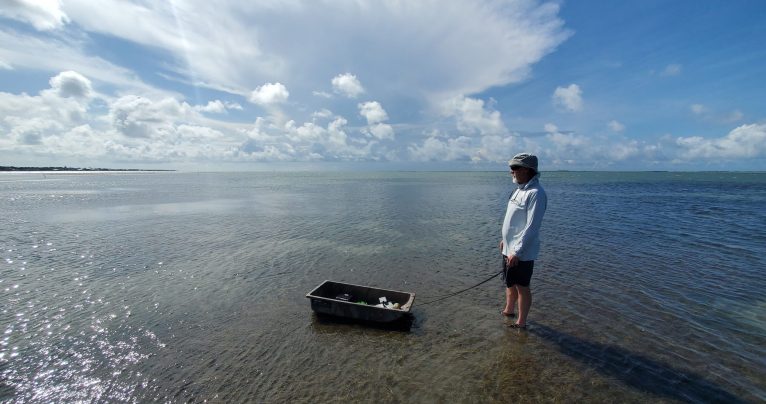
In North Carolina, for example, excessive sediment and nutrients from storm runoff have contributed to declining water quality in the Albemarle and Pamlico sounds.
Meanwhile, Shackleford Banks and other barrier islands are continuing their slog toward the continent as waves, wind and storms sweep sand from their beaches.
The grassy marshes capture and stabilize the sediment to slow its creep. Submerged aquatic vegetation and marsh also store vast volumes of “blue carbon,” greenhouse-gas causing carbon dioxide stored in the plants and their sediment. As long as it remains stored, it won’t add to the atmosphere’s oversupply of CO2.
Securing the marshes, Kenworthy said, are meadows of seagrass.
“Seagrass sets the stage for everything,” he warned. “Losing it threatens the entire system. It’s the driver of our fisheries. That alone justifies its protection.”
Coastal Review is partnering with Carolina Public Press to provide readers with more environmental and lifestyle stories of interest about our coast.







